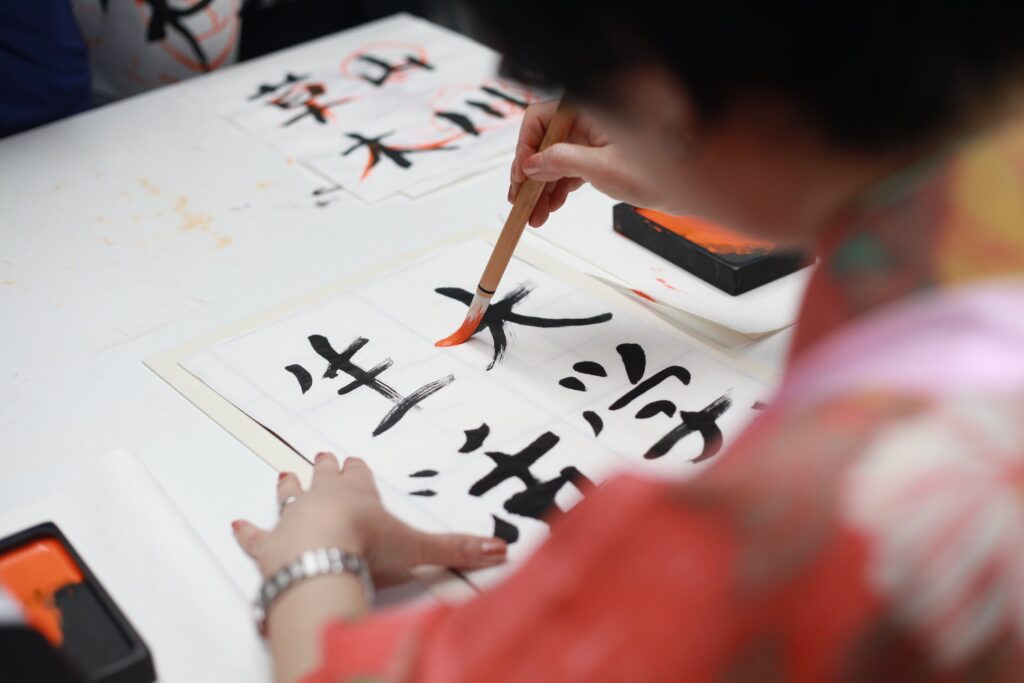Many Western people learn amazing languages like Spanish, French, or German. There is nothing wrong with that. However, there is something beneficial from leaving that comfort zone of western European or Indo-European languages. We should not avoid certain languages because of our own perceptions about what is difficult. I had the same misconception years ago.

At one point, I was only familiar with English, Bulgarian, Russian, and French, which all shared something similar. In school, French came so naturally to me because if I couldn’t literally translate my English sentence, it would work literally from Bulgarian to French. When I encountered some Korean in 2013 and some informal learning videos teaching some basic structures, I was shocked. How can the object be the first word of the sentence? How can the subject be missing but the verb doesn’t change. It didn’t make sense, and I was scared. That was wrong.
Learning any foreign language can improve your understanding of different people and can help you understand your own native language in a more flexible and holistic way. However, I do believe a learner gets something different from learning a language that is radically different from their own.
When a native English speaker learns Spanish, they learn a lot of cognitive flexibility. When a native English speaker learns Cantonese, I think they get a lot more cognitive flexibility because there are more structural difference between that target language and one’s native language.
We should not fear languages because they can seem daunting. As such, I think native English speakers especially have a lot to gain from learning East Asian languages.
In this article, I will be referring to the Chinese languages that descend from Middle Chinese, Korean, Japanese, and Vietnamese. This group in particular has a very unique history completely independent from the histories typical of Europe. These languages have no common ancestor as far as we know, but they do share a common history of influence, and the agent of influence was Chinese characters, also known as Han characters, or 漢字.

What makes this group special?
The Chinese languages are pretty unique because the system of logographic characters works very well with the structure of the language. If we tried to convert English or Turkish or Russian into a writing system where one word was one unique letter, it wouldn’t work. There are too many similar words. There are too many situations were one sound changes everything. There are too many sound changes depending on context. Chinese is different. For the most part, one syllable represents one unit of meaning. This system works.
In medieval history, after the Chinese classical era of the Han dynasty, the international influence of the Middle Kingdom was so great that its neighbors took notice. Whether through soft power or direct military conflict, the modern-day countries of Korea, Japan, and Vietnam went through a significant linguistic changes. During the Tang and Song dynasties, these countries imported the Chinese writing system to their own languages.
However, there was a big problem. Korea and Japan have more similarities to English or Turkish or Russian in terms of structure. There are many similar words. Inflections make a big difference to meaning, which the Chinese writing system cannot account for. While those languages did not fit the language perfectly, they nonetheless used this system from hundreds of years.

The different perspectives on the relationship
I talked to a few Korean people about this topic, the relationship between their native language and Chinese. For a Korean person, it sounds like nails on a chalkboard to say Korean imported Chinese words. The way they see it is that Korean imported Chinese characters, and those characters brought certain vocab words. I cannot say if Vietnamese or Japanese people see it the same way, but we should respect the wishes of the natives.
From the English perspective, we imported Latin and Greek words, not Latin and Greek writing. Koreans see it differently. There is so much value in speaking to natives. They didn’t import Chinese words like English imported French words; Koreans imported Chinese characters.
As language learners we should take advantage of this shared connection between very different languages. Chinese, Korean, Japanese, and Vietnamese share a significant connection, and that connection is Chinese characters.
I encourage all language learners to try learning Chinese, Korean, Japanese, or Vietnamese. I think I learned so much about how words are formed from these languages. (I never learned Vietnamese, but it’s in my queue.)
So like how do they form words?
Let’s take the word for Japan.
日本
In Mandarin, this is rìběn.
In Japanese, this is nihon.
In Korean, this is ilbon.
In Vietnam, this is Nhật Bản.
日 means sun. 本 means origin. It literally means sun origin. From the Chinese perspective, Japan is the country from which the sun came, the East.
If I were to recreate this name using Latin roots, I would call it Solorientia, which I fully just made up. I just smashed some random roots together: sōl (sun) and orior (I rise), from which we get oriental and orientation, and -ia, which usually forms country endings.
That seems strange, right? However, we do the same with western languages. The country of Australia literally means southern country, using Latin roots.
This may seem so mundane, but it blew my mind when I learned about this way of forming words. You mean to tell me…a part of the word can say anything they want without using Latin roots? I know. That is obvious, but it wasn’t obvious to me before 2014 when I started learning Korean and learned words that came from Chinese characters.
Your turn
Okay. You’ve accepted that this group of languages is good to learn. Now. Where do you start?
In my case, I learned Korean first. Then, I learned Japanese. Then, I started Mandarin Chinese. I haven’t started Vietnamese yet, but I want to. I think my order was almost perfect. Korean has a fully phonetic writing system. You don’t need to know how to write a single Chinese character. At that time, I could focus on the very different grammar and vocab. I wasn’t overwhelmed because the writing system was not even a concern of mine. I literally learned the whole writing system in one afternoon.
When I moved to Japanese, I had to be slowly introduced to Chinese characters. However, since the structure was so similar to Korean, these difficult structures were not too difficult to me. I think Japanese is a very key #2 language. You don’t need to know all Chinese characters from day one. You can dip your toes into Chinese characters without being pushed into the deep end.
When I started Mandarin, I was pushed into the deep end, but it wasn’t so shocking because Japanese already introduced me to some basic characters. Of course, I did not know all 2136 Joyo Kanji, the characters that all Japanese people learn in school. However, just knowing a few dozen or a few hundred can seriously help you ease your way into Chinese. Vietnamese is like Korean, where it uses a phonetic writing system, so I think it can go right where Korean went in my story.

Officially, I will declare that I recommend learners who want to learn all of these languages do this order:
- Korean and Vietnamese (it doesn’t really matter between these)
- Japanese
- Chinese
Obviously, if you only want two, just do those two. There’s nothing more important than loving the language you learn. If you love them all, this is my personal recommendation.
These East Asian languages are such a huge portion of the world’s population, and no langugage learner should be too afraid of these languages. I recommend all language learners at least dabble in Chinese, Korean, Japanese, or Vietnamese.
Keep on learning!